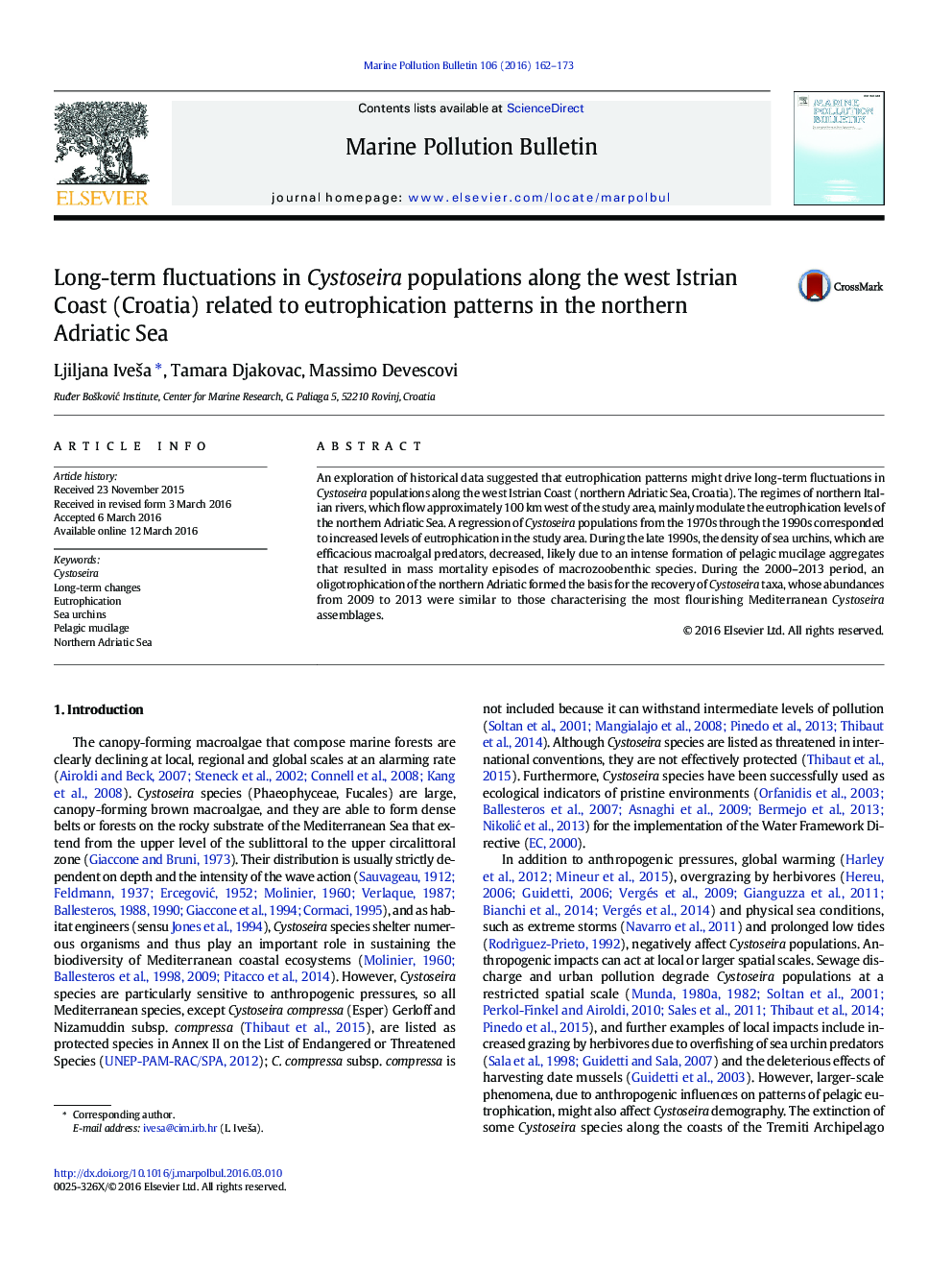| Article ID | Journal | Published Year | Pages | File Type |
|---|---|---|---|---|
| 4476475 | Marine Pollution Bulletin | 2016 | 12 Pages |
•Northern Italian rivers are the main source of nutrients for the northern Adriatic Sea.•Along the west Istrian Coast, Cystoseira regressed from the 1970s to the late 1990s.•Surveys performed during 2009–2013 revealed a substantial recovery of Cystoseira taxa.•Long-term changes in Cystoseira reflected variations in pelagic eutrophication levels.•The pelagic mucilage phenomenon could modify the structure of benthic assemblages.
An exploration of historical data suggested that eutrophication patterns might drive long-term fluctuations in Cystoseira populations along the west Istrian Coast (northern Adriatic Sea, Croatia). The regimes of northern Italian rivers, which flow approximately 100 km west of the study area, mainly modulate the eutrophication levels of the northern Adriatic Sea. A regression of Cystoseira populations from the 1970s through the 1990s corresponded to increased levels of eutrophication in the study area. During the late 1990s, the density of sea urchins, which are efficacious macroalgal predators, decreased, likely due to an intense formation of pelagic mucilage aggregates that resulted in mass mortality episodes of macrozoobenthic species. During the 2000–2013 period, an oligotrophication of the northern Adriatic formed the basis for the recovery of Cystoseira taxa, whose abundances from 2009 to 2013 were similar to those characterising the most flourishing Mediterranean Cystoseira assemblages.
